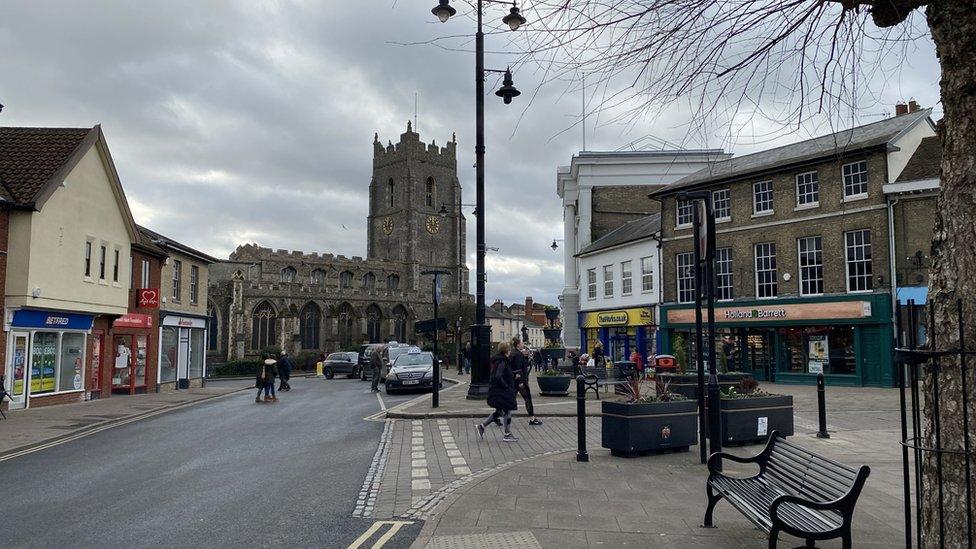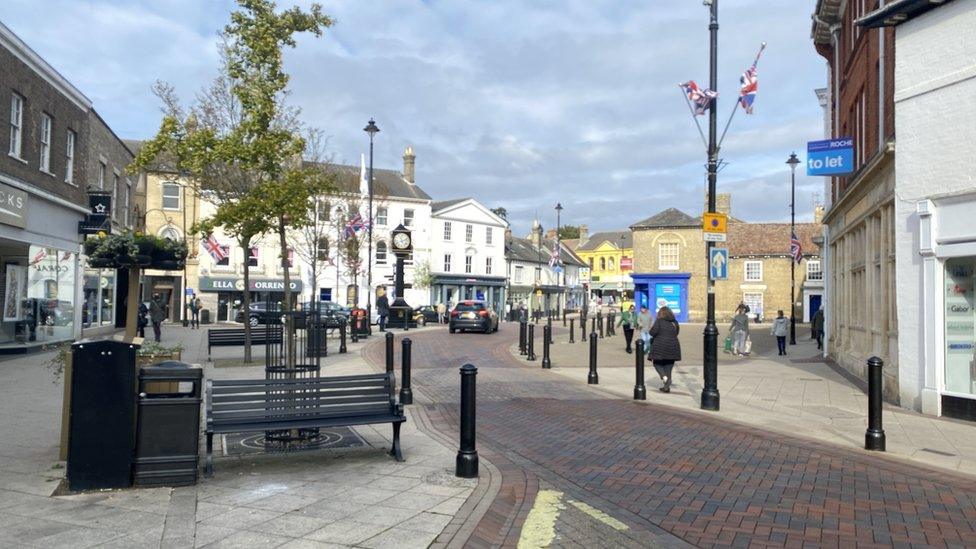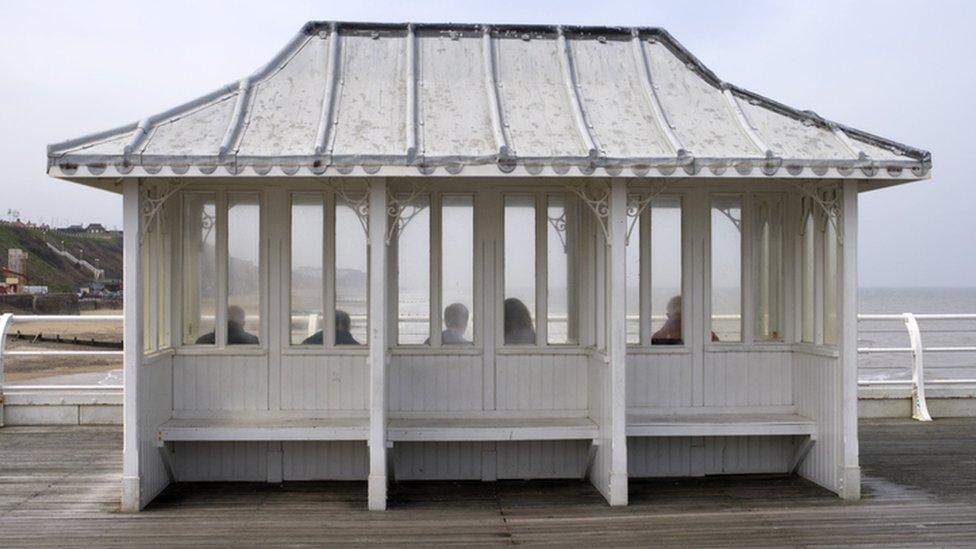Census 2021: How has Suffolk changed in 10 years?
- Published

Ipswich has the youngest population in Suffolk with almost a fifth of people aged under 15
Suffolk's population has increased by more than 30,000 in the last 10 years, according to new census data.
In 2011, the county's population was recorded as 728,200. Data from the 2021 census gave the population as 760,300, an increase of 4.4%.
This was lower than the overall increase for England which was 6.6%.
The census asks people to answer questions about themselves, their household and their home to build a detailed snapshot of society.
Babergh

Sudbury is one of the largest towns in the Babergh district
In Babergh, the population size has increased by 5.2%, from around 87,700 in 2011 to 92,300 in 2021.
There has been an increase of 30.1% in people aged 65 years and over, a decrease of 0.5% in people aged 15 to 64 years, and a decrease of 6.0% in children aged under 15 years.
East Suffolk

An artwork by Banksy appeared in Lowestoft in 2021 during the artist's "Great British Spraycation"
In East Suffolk, the population size has increased by 2.6%, from around 239,600 in 2011 to 245,900 in 2021.
There has been an increase of 21.3% in people aged 65 years and over, a decrease of 2.5% in people aged 15 to 64 years, and a decrease of 5.4% in children aged under 15 years.
Ipswich

The Orwell Bridge in Ipswich carries the A14 over the River Orwell
In Ipswich, the population size has increased by 4.7%, from around 133,400 in 2011 to 139,700 in 2021.
There has been an increase of 16.5% in people aged 65 years and over, an increase of 1.5% in people aged 15 to 64 years, and an increase of 6.8% in children aged under 15 years.
Mid Suffolk

Stowmarket is the largest town in Mid Suffolk
In Mid Suffolk, the population size has increased by 6.2%, from around 96,700 in 2011 to 102,700 in 2021.
This is lower than the overall increase for England (6.6%), where the population grew by nearly 3.5 million to 56,489,800.
There has been an increase of 33.5% in people aged 65 years and over, an increase of 1.0% in people aged 15 to 64 years, and a decrease of 7.5% in children aged under 15 years.
West Suffolk

Bury St Edmunds is the largest settlement in West Suffolk
In West Suffolk, the population size has increased by 5.3%, from around 170,800 in 2011 to 179,800 in 2021.
There has been an increase of 21.6% in people aged 65 years and over, an increase of 1.7% in people aged 15 to 64 years, and an increase of 1.4% in children aged under 15 years.
Your device may not support this visualisation

Find BBC News: East of England on Facebook, external, Instagram, external and Twitter, external. If you have a story suggestion email eastofenglandnews@bbc.co.uk, external
- Published28 June 2022

- Published28 June 2022

- Published28 June 2022
